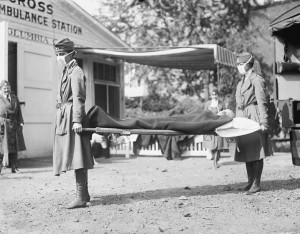This is a shoulder season—too cold and too often icy for comfortable biking and too warm and rainy for snow sports (at least at our elevation)—so we are inside more than we like. This is a time to concentrate on health and fitness, building up resources that we can put at risk during the fun seasons. And so we notice dispatches that might not usually make the radar:
- When you ski this winter, don’t fall down. Or hurt yourself in any way that requires pain meds, because ER health professionals apparently hold back on older folks in pain. You can read about it in the Annals of Emergency Medicine. (Or, like we did, in Health Day.) “Among patients with a primary complaint of pain, an analgesic (such as morphine, oxycodone or ibuprofen) was given to 49 percent of patients 75 and older, and 68 percent of patients aged 35 to 54. An opioid (such as morphine or oxycodone) was given to about 35 percent of elderly patients and 49 percent of middle-aged patients, the investigators found.” This is one way to lower the cost of Medicare.
- Jawbone, which is known for its Bluetooth accessories, has a new wristband thing that tracks your movement (like a pedometer) and your sleep. There’s an iPhone ap, because everything comes with an ap. The ap also lets you take photos of your food and then asks you, a while later, how you feel. (It doesn’t give you any estimate of the calories, though.) This is an odd collection of functions in a device that looks a bit cumbersome to be worn around all day and night. Smart Planet has a review-slash-interview on it that asks “Why not more Bluetooth capabilities?” when the greater question might be “Why at all?”
- And while we’re on gimmicks: remember “whole body vibration,” which is basically a vibrating platform that you stand on in the hope of improving bone density? It doesn’t work, at least for that, according to a study in the Annals of Internal Medicine (or so says the University Health Network). We expected as much: if constant shaking and vibrating boosted bone density, everyone who flies commercial for a living would have the femurs of a mastodon.
- This is the week that everyone is talking about senior sex, thanks to a study released at the Gerontological Society of America’s 64th Annual Scientific Meeting in Boston. “Findings revealed that 40 percent of the participants who reported no sexual activity in the last 12 months said they were ‘happy’ with life in general. But almost 60 percent of those who had sex more than once a month said they were ‘very happy.’ Researchers controlled for other factors such as age, health, gender, and financial satisfaction. In rating marital satisfaction, 59 percent of the participants who hadn’t had sex in the past year said they were happy with their marriage, while 80 percent of those who had sex once a month said they were very happy.”
- And finally, we will need all that sex-derived happiness…if we believe Forbes blogger Robert Laura, who (over)writes about “a hidden epidemic taking place within the shadows of retirement. It’s a chilling reality that will impact boomers and their families more deeply than any economic recession or market crash. The idyllic images of retirement – from long walks on the beach, to worldwide travel, to turning personal memoirs into a best seller – are being transformed into walks down a hospital hallway, seclusion, and obituaries. It’s the dark side of retirement, where powerful forces such as addiction, mental illness, and suicide are quickly becoming the dominant factors for which boomers need to plan and prepare.” Obviously, this is serious: “The National Institutes of Health reports that, of the 35 million Americans age 65 or older, nearly 2 million suffer from full-blown depression. Another 5 million suffer from less severe forms of this illness.” That translates to 20 percent having some kind of depression. Does that mean addiction, mental illness and suicide should be “the dominant factors” as one plans for retirement? Probably not, but we want to treat it seriously…and that means we object when someone pulls a Dr. Tongue on the issue.
Photo: Demonstration at the Red Cross Emergency Ambulance Station in Washington, D.C., during the influenza pandemic of 1918. From the National Photo Company via Library of Congress.










